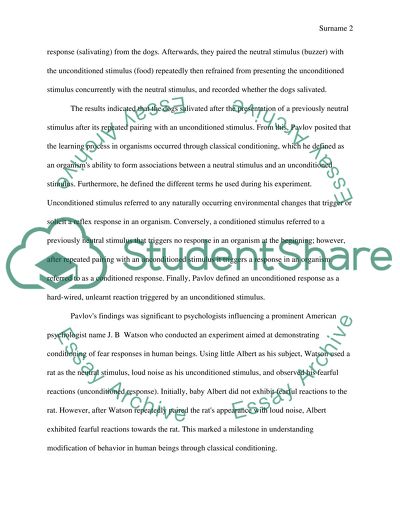Compare and contrast the learning principles of Pavlov's Classical Essay. Retrieved from https://studentshare.org/psychology/1637036-compare-and-contrast-the-learning-principles-of-pavlovs-classical-conditioning-and-skinners-operant-conditioning
Compare and Contrast the Learning Principles of Pavlov'S Classical Essay. https://studentshare.org/psychology/1637036-compare-and-contrast-the-learning-principles-of-pavlovs-classical-conditioning-and-skinners-operant-conditioning.


